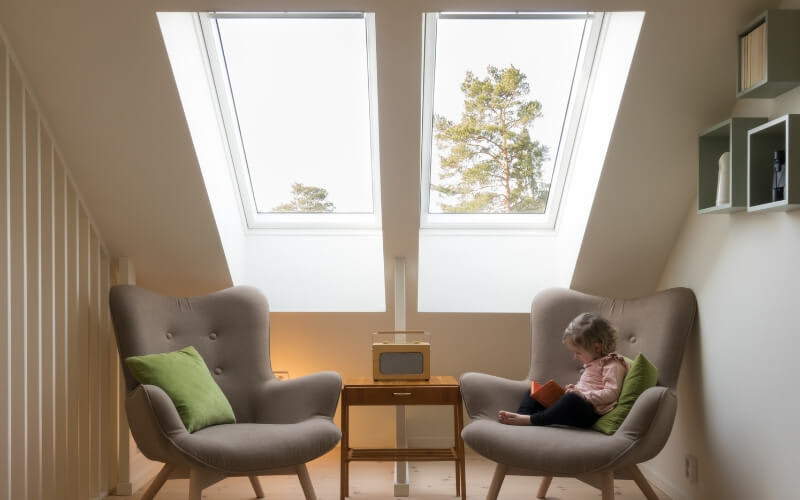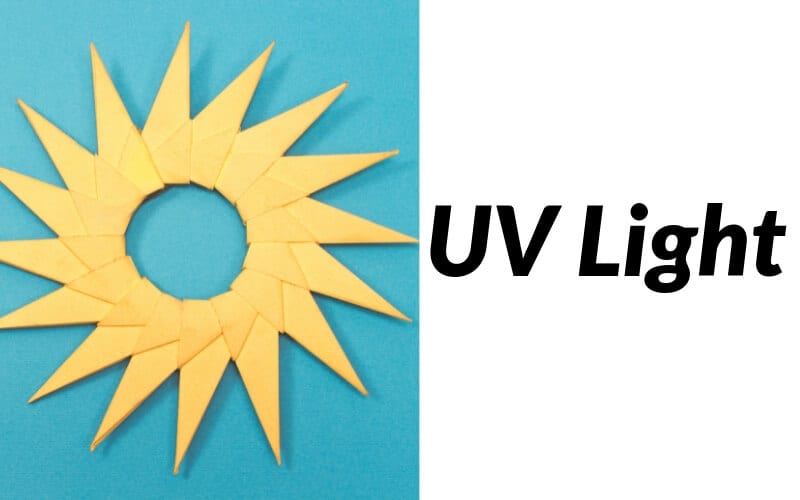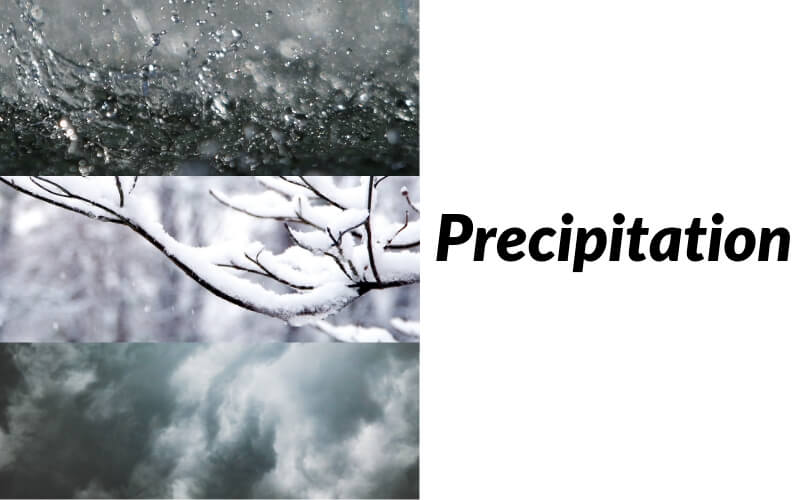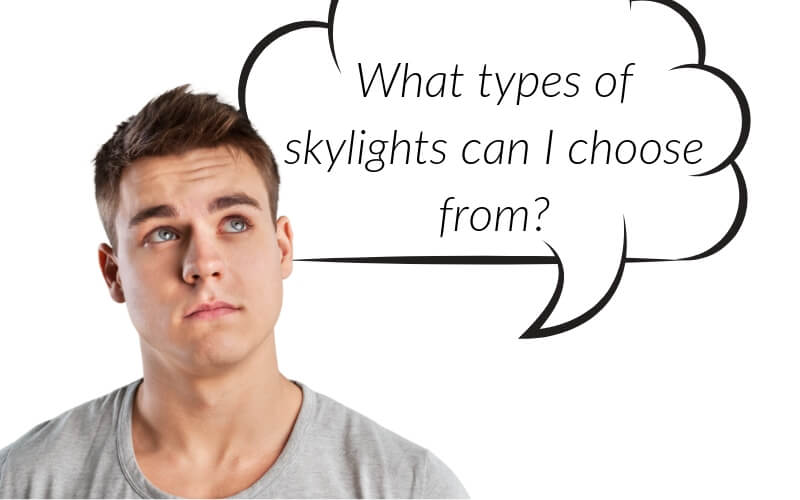Choosing the glass for your skylight
Imagine what it would be like to transform that dark, gloomy spare room into a bright, sun-filled retreat by day and an indoor stellar observatory by night. Now wouldn’t it be great if you could let in all that light without needing to install windows that provide your nosy next-door neighbor a clear view into the room?
The solution is simple – skylights. Now maybe you have been avoiding skylights because you heard horror stories about leaks and other problems. Admittedly, skylights can seem like a somewhat counter-intuitive concept. After all, why would you want to take a perfectly good roof and cut a hole in it?
The good news is that modern skylights are much more reliable than their original counterparts. You can have your bright natural light and a weatherproof house too. Just plan for your skylight installation and choose the skylight that is right for you.

Not sure how to choose a skylight? We have put together the necessary information on skylight types, materials, and coating options to prepare you to pick out the perfect skylight.
Ready? Let’s get started.
What conditions does your skylight need to withstand?
Before we dive into what specific types of glass are best for skylights, let’s first talk about what challenging conditions your skylights need to endure.
UV Light
As that gorgeous natural light comes streaming into your room, it first passes through the skylight. That means that whatever material your skylight is made of must be designed to handle extended UV light exposure.

Precipitation
Rain, snow, sleet, hail, ice – these unforgiving elements all land directly on your roof and skylights. Be sure they can take it.

Impact
Tree branches are the most likely cause of impact damage, although other airborne debris from a heavy wind-storm can also cause damage. Know how your skylight will react to impact damage.

What types of skylights can I choose from?

Skylights come in two operational types, giving you options for how your skylight functions.
Fixed/Inoperable
Just like they sound, fixed or inoperable skylights don’t open and close. They simply remain stationary and let light in.
Venting/Operable
If you want your skylight to function more like a window and allow both light and air to come in, choose a venting or operable style of the skylight. These skylights can either be opened manually, with a remote or – on very high-end models – automatically, based on built-in rain and moisture sensors.
What materials are skylights made from?
Sound like you know what you’re talking about when you refer to your material choices as your “glazing options.” Skylights can be glazed with either plastic or several types of glass, although glass is usually preferred.
Does it matter which skylight glazing you choose? Yes, it does, so let’s check out the pros and cons of each.
Plastic
Plastic is the original glazing option and one that has been used for a long time. It has a few pros, but many cons and it is becoming a less common choice.
Pros
Budget-friendly
Light-weight
Multiple shapes available
Cons
Scratches more easily
Discolors more easily
Less clear view
Allows more UV light through
Only comes in standard sizes
Glass
The preferred glazing for skylights is glass and there are several variations of glass to choose from. They share some similar pros and cons along with having their own unique traits.
Pros
More sophisticated appearance
Clear view
Many shapes available
Many sizes available
Doesn’t scratch as easily
Better UV protection
Cons
Heavier
Custom sizes and shapes are more expensive
Tempered Glass
What exactly is tempered glass? Check this out: when a piece of glass has been tempered, this means that it was super-heated and then cooled rapidly. This process results in a piece of glass that is 4-5 times stronger than the original. If a sheet of tempered glass breaks, it shatters into a lot of small, more rounded pieces instead of sharp shards.
Laminated Glass
Do you remember playing with a laminating machine and sandwiching a piece of paper between two sheets of the laminate material? Perfect. You understand laminated glass.
To make laminated glass, one sheet of clear vinyl is encased between two sheets of glass. They are bonded together, creating a super-strong, impact-resistant glass. If the glass somehow does break, the sheets all hold together with minimal loose glass falling inside your house.
As if that’s not enough, there’s more. Laminated glass blocks a whopping 99% of UV light and it also has soundproofing properties.
Tempered-Over-Laminated Glass
Now you may be wondering if you should use tempered or laminated glass for your skylights and how to choose. The good news? You don’t have to.
Here’s the thing: the absolute best kind of glass for a skylight is tempered-over-laminated. This hybrid approach combines the strengths of both tempered and laminated glass to give you the strongest, most resilient, best quality skylight you can imagine.
What coatings are used on skylights?
Your choice of glazing isn’t the only factor that determines how well your skylight performs. You can further enhance the performance by adding coatings to your glass.
Tinting
Just like on your car windows, adding tinting to a skylight helps it to absorb more of the solar heat and keep it from transferring inside. This keeps your home cooler in the hot summer months.
Low-Emissivity (Low-E)
The Midwest is blessed with both heat and cold, so a Low-E coating can really benefit you here. This type of coating helps improve energy efficiency in both the summer and winter. The coating reflects your home’s inside temperature back inside instead, so you keep more of your cool summer air or toasty winter air in.
The Bottom Line
Skylights can bring light to an otherwise dreary room while still maintaining visual privacy. Remember to select a skylight that stands up to all the stressors that it will be faced with. Skylight glazing options include both plastic and glass although glass is usually preferred. The best kind of glass for a skylight is tempered-over-laminated and coatings can be added to further enhance the skylight’s performance.
Are you ready to install a skylight in your home? Contact us and let us know what room in your home is ready to be upgraded with a skylight.

